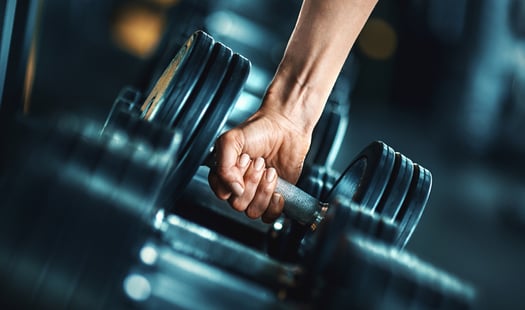 Hormones have an especially important role in dealing with resistance training. The endocrine system is a collection of glands that produce hormones that regulate metabolism, growth and development, tissue function, sexual function, sleep, and mood. Some of these hormones are anabolic, which promote tissue building, and others are catabolic, which are used to degrade/break down cell protein. Ideally for muscle building, it is important to produce anabolic hormones while limiting the production of catabolic ones.
Hormones have an especially important role in dealing with resistance training. The endocrine system is a collection of glands that produce hormones that regulate metabolism, growth and development, tissue function, sexual function, sleep, and mood. Some of these hormones are anabolic, which promote tissue building, and others are catabolic, which are used to degrade/break down cell protein. Ideally for muscle building, it is important to produce anabolic hormones while limiting the production of catabolic ones.
Anabolic and Catabolic Hormones
Scientists have identified examples of anabolic hormones in the human body. These examples include insulin, IGF-1 (insulin-like growth factor), testosterone, and growth hormone. On the other hand, the catabolic hormones are cortisol, catecholamines, and progesterone. For our purposes, we can focus on two of these hormones: testosterone and cortisol.
Testosterone
Testosterone is the primary androgen hormone. The way to promote testosterone is short rest periods, 30 to 60 seconds, heavy resistance—85 to 95 percent 1RM (large motor units), and chronic resistance training (2+ years). Further, testosterone has a known effect on the nervous system: it increases neurotransmitters, and it acts on every tissue in the body. Men have 15 to 20 times more testosterone than women, and acute, or sudden, increases following workouts are small.
Cortisol
Cortisol, on the other hand, converts amino acids into carbs and breaks down proteins and inhibits the synthesis of proteins, which is bad if you are trying to build muscle because proteins are the building blocks for muscle. Cortisol increases during exercise with high volume/short muscle rest, causing large serum cortisol. This does more damage to the muscle and is not good for muscle recovery. Chronically high cortisol levels have adverse catabolic effects.
Knowing that your body produces both testosterone and cortisol, the difficulty lies in the ability to produce more testosterone than cortisol to see muscle growth.
Ways to Promote Lower Cortisol Levels
Here are four ways to lower your cortisol levels so that you can build muscle:
- Utilize proper rest times during high-intensity resistance workouts.
- Eat enough protein and carbohydrates to help you through the resistance workout.
- Perform resistance workouts when your body’s cortisol levels are lower, typically later in the day.
- Make sure you are getting enough sleep.
***
Make sure you are paying attention to your hormones during resistance exercise. If you are not careful, hormones might be affecting your gains in a negative way instead of a positive way. As you can see from this information, these are just a few areas you can target to start producing testosterone and therefore, affect the tissues within your body. Hopefully, this information gives you a better understanding of the main two types of hormones, anabolic and catabolic, how they work in your body, and ways to achieve those gains you are looking for in your resistance training.
Source: Haff, G., & Triplett, T. (2016). Essentials of Strength Training and Conditioning (4th ed.). Human Kinetics.
This blog was written by David Behrmann, NIFS Health Fitness Instructor.To learn more about the NIFS bloggers, click here.

